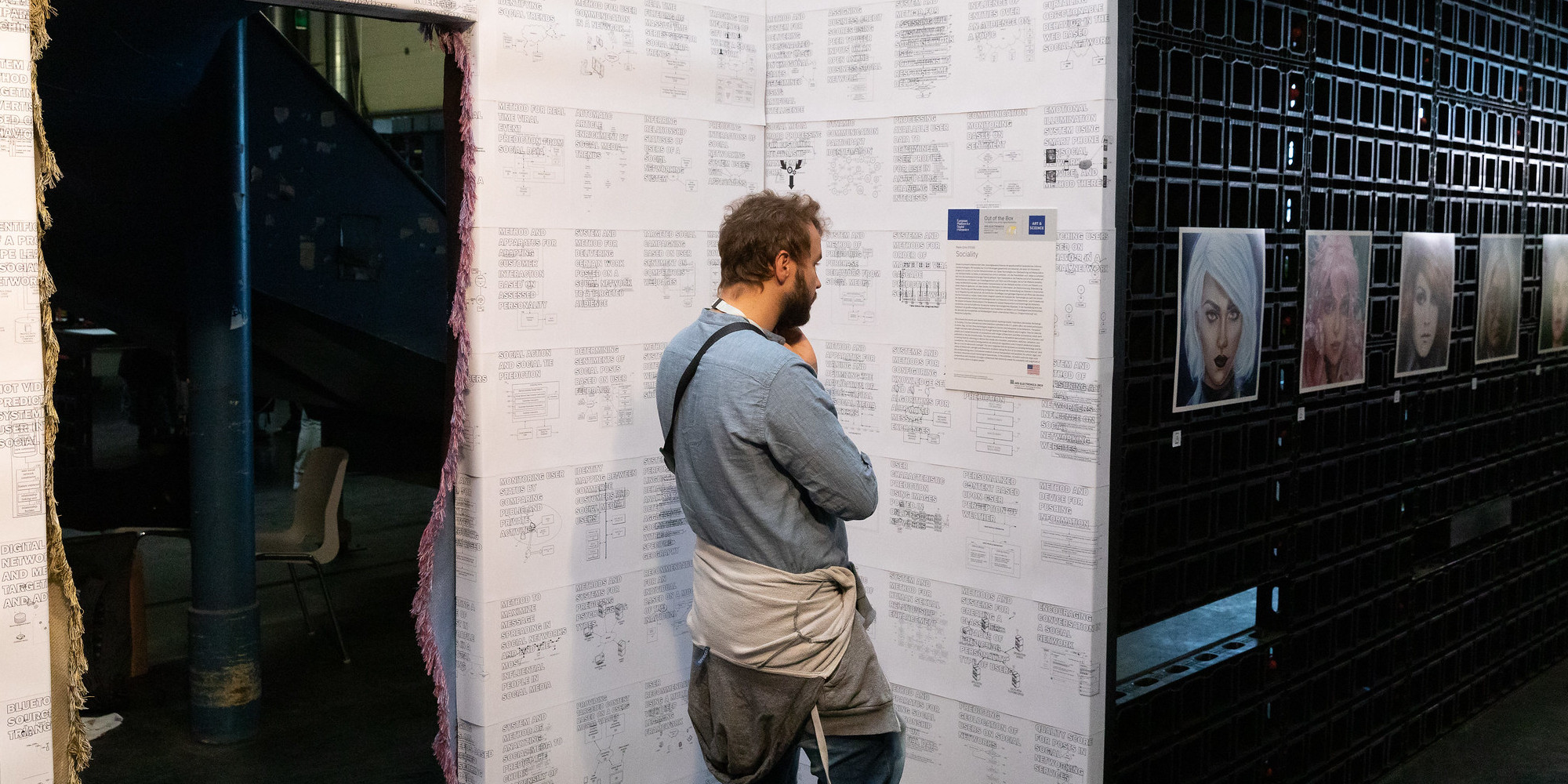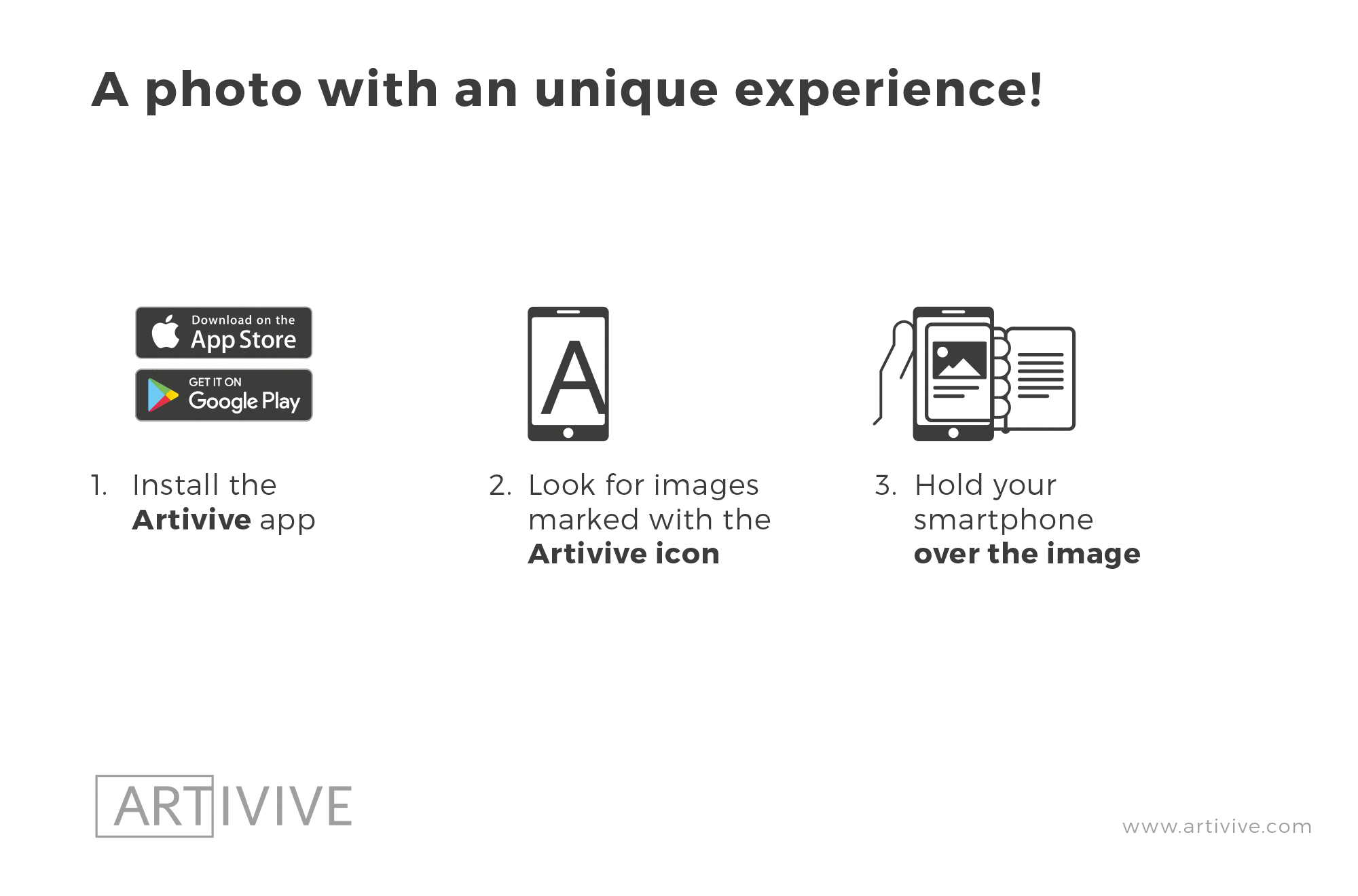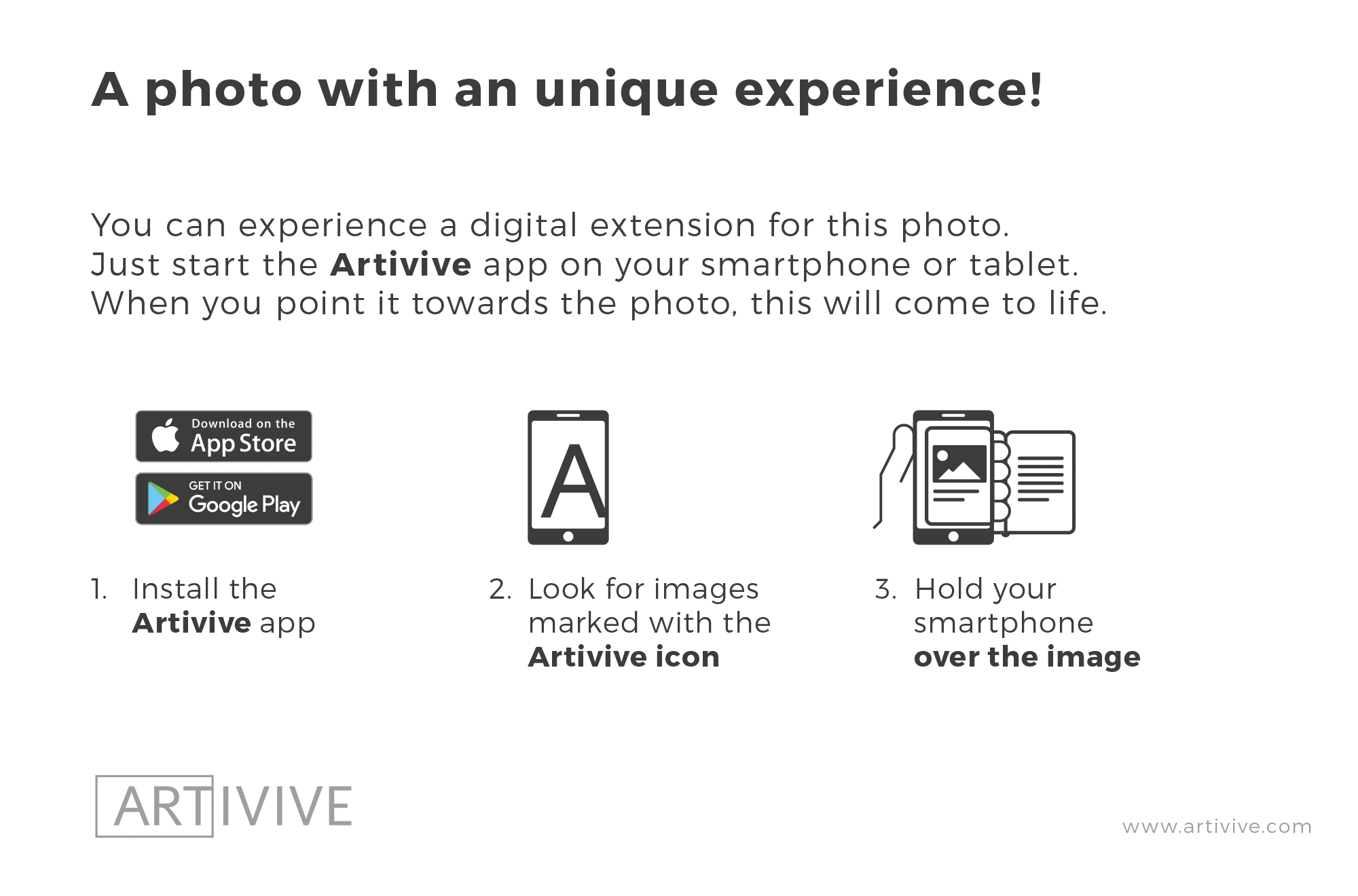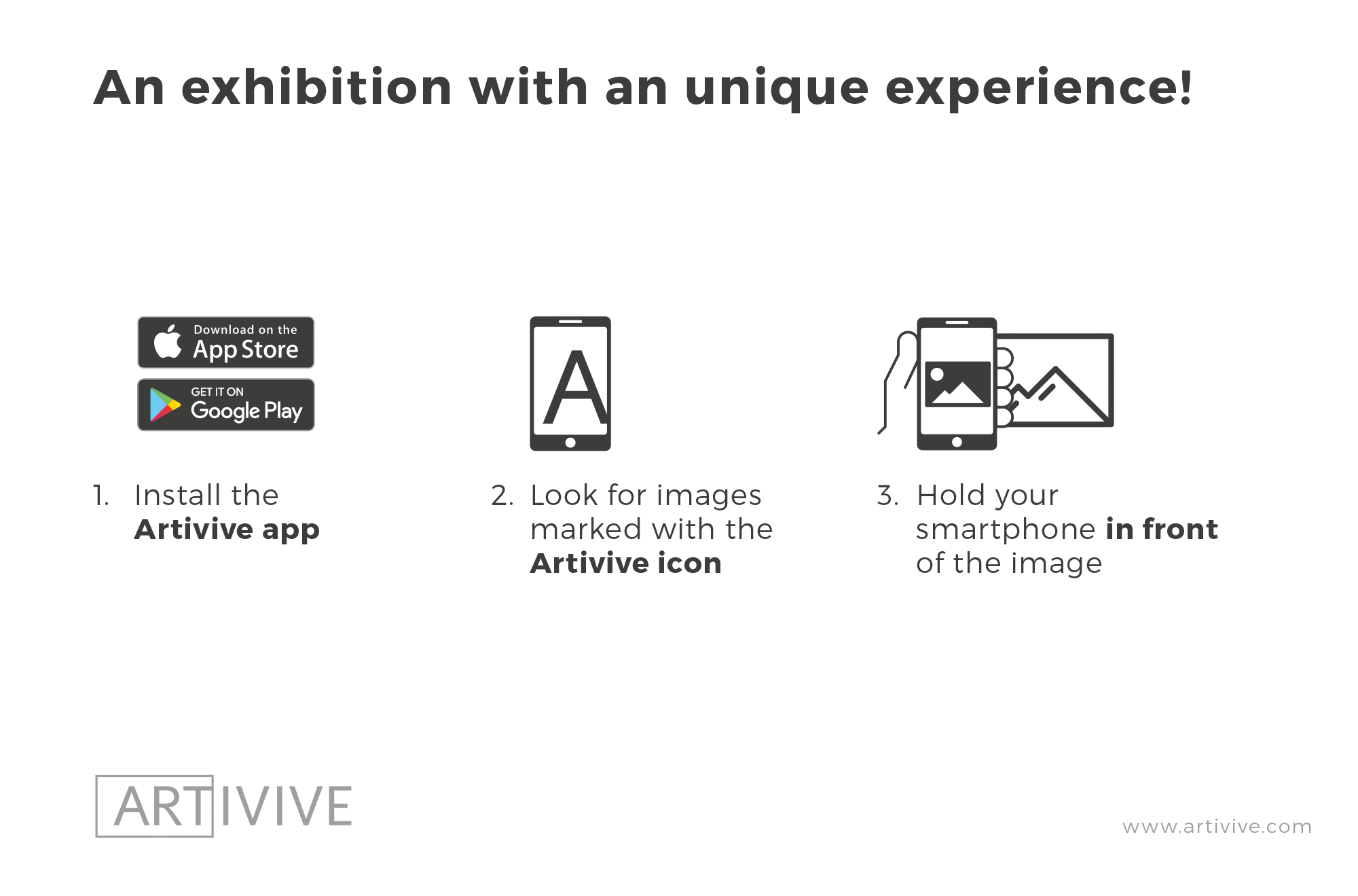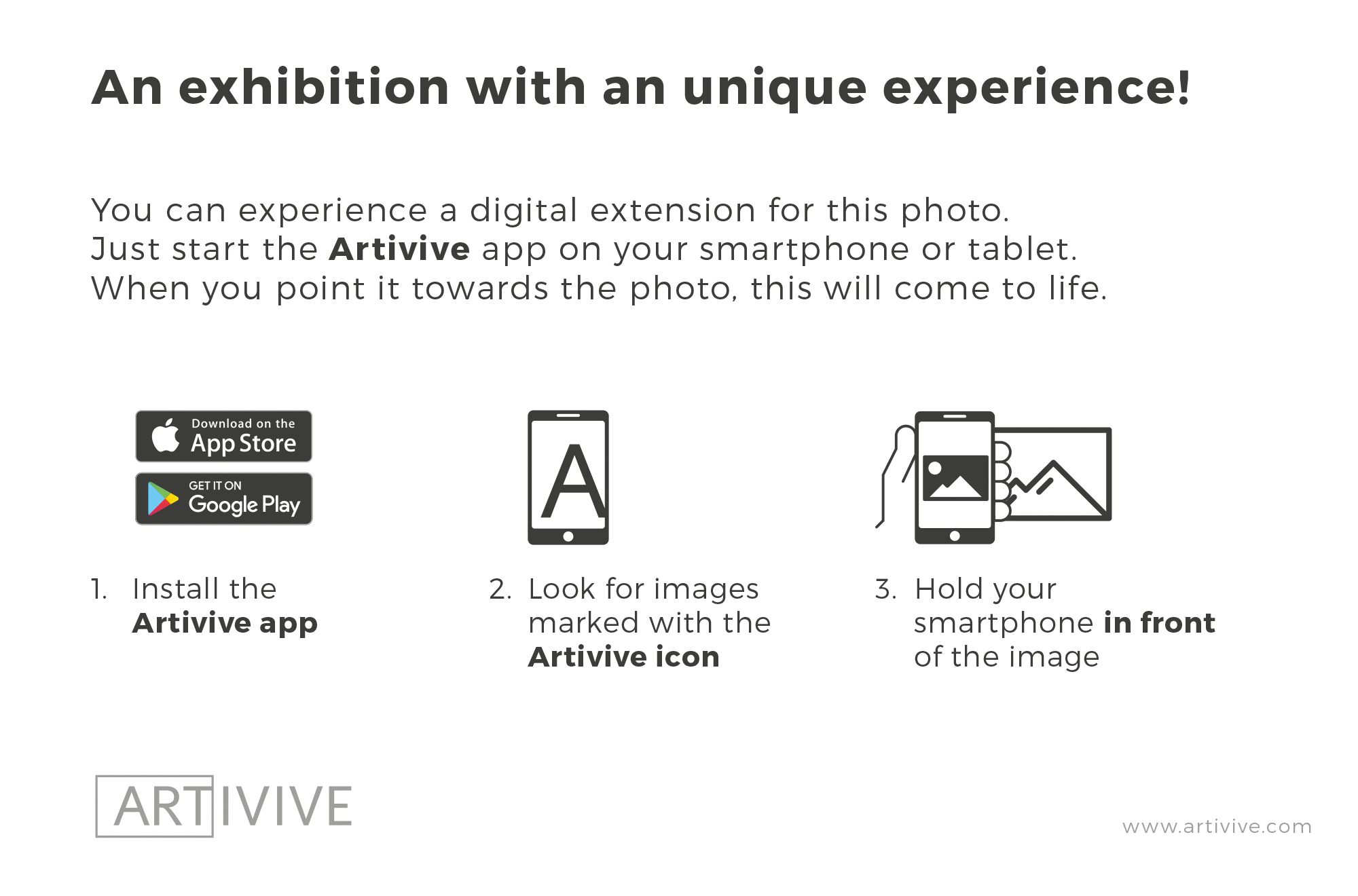Can we continue to distinguish the future from the present? Should we? The rapidly accelerating impact of technology on our society, environment, and selves has, in recent years, left us questioning the boundaries between science and science-fiction, optimism and hindsight, the authentic and the fabricated, the familiar and the unimaginable. But what about the less perceptible boundaries, those strange delineations we draw unaware?
Over the past year, San Francisco Bay Area-based Stochastic Labs has convened a unique group of artists, engineers, scientists, thought leaders, and entrepreneurs to consider these questions through the production of artworks, prototypes, and social provocations. Drawing on the Bay Area’s longtime culture of innovation, deep sustainability focus, and multi-generational commitment to independent thinking, these works ask the viewer to be present and future at once –a useful strategy, perhaps, for anyone navigating temporalities mediated by technology.
The exhibition includes work by past and current Stochastic Labs residents including Paolo Cirio (Golden Nica recipient, Ars Electronica 2013), Lauren McCarthy and Alexander Reben, as well as pieces from the CRISPR (un)commons residency, which places Stochastic Labs artists alongside the world’s leading genomics pioneers at the Innovative Genomics Institute at UC Berkeley.
Project Credits:
- Curator: Vero Bollow
- Text: Vero Bollow
- Stochastic Labs are located in Berkeley, California, and support creators working at the intersection of art, technology and science, and conversations about the future. Residencies are granted on a rolling basis.
http://www.stochasticlabs.org
Paolo Cirio (IT/US)
Sociality
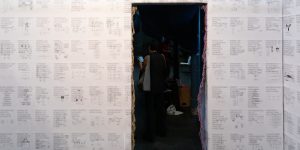
This artwork documents over twenty-thousand patents exposing socially’ hazardous information technology. In Sociality, Cirio has collected and rated inventions submitted to the U.S. patent office. He invited participants to share, flag, and ban these technologies designed to monitor and manipulate social behaviors. The patent images and data were obtained by Cirio through hacking the Google Patents search engine. Then he rated the patents and created thousands of compositions with images of flowcharts and titles of inventions, which were published on the site sociality.today. The visual compositions on the website were printed in form of posters and a coloring book for informing on devices that enable discrimination, polarization, addiction, deception, and surveillance. The concept of turning patents into vehicles for regulations aims to exploit intellectual property law as a tool for democratic oversight. This work integrates both the dystopia surrounding technology and the utopia of democratic oversight with flowcharts of patents taking the form of documentary and protest art. With this problematizing piece, Cirio exposes evidence of social manipulation and questions the ethical, legal, and economic structures of such technological apparatuses. In the exhibition, the public confronts large-scale compositions with hundreds of images of flowcharts that abstractly invoke the complexity and magnitude of such uncanny plans to program people.
Lauren McCarthy (US), David Leonard (US)
Virtual Caring
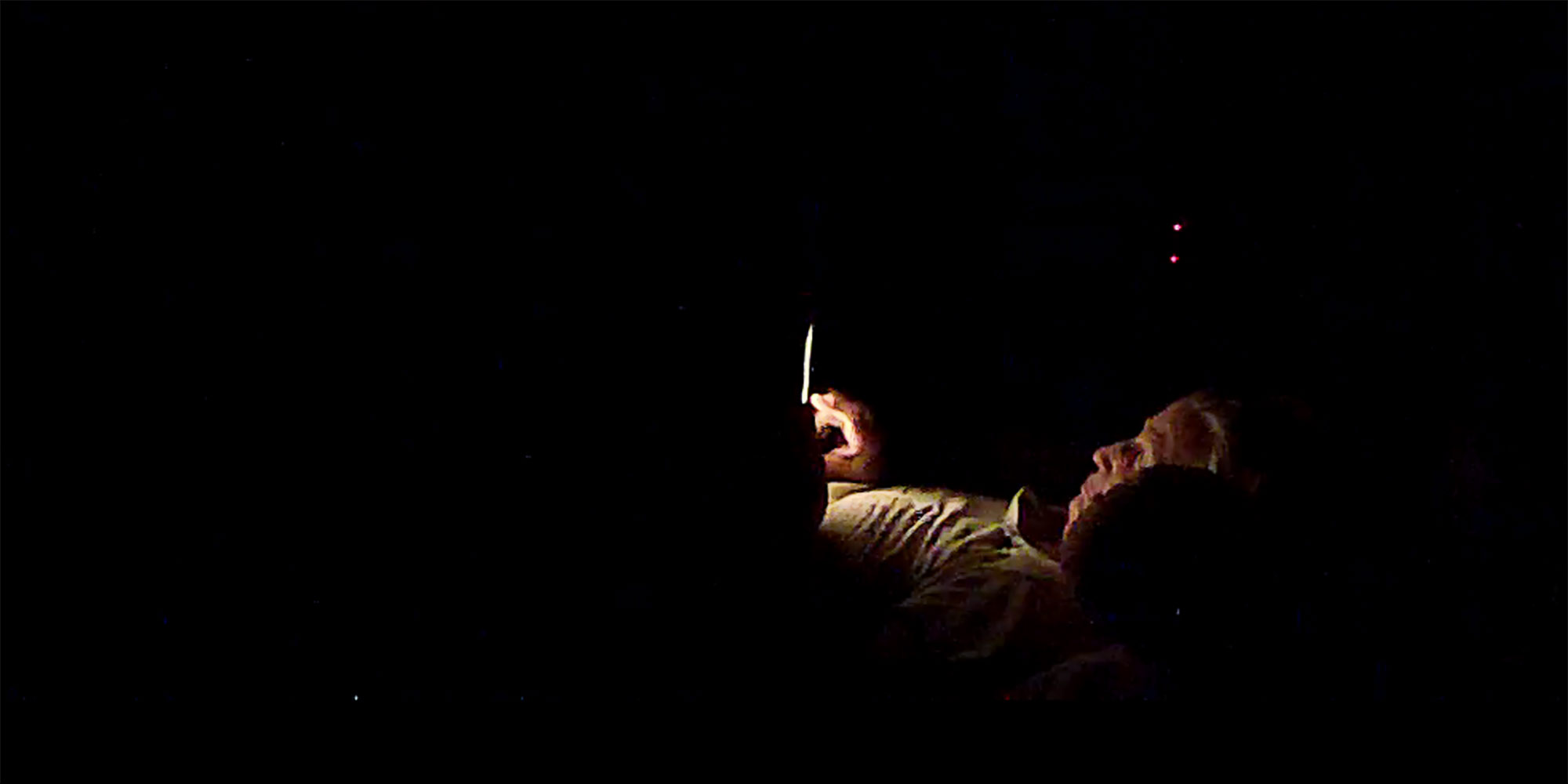
According to AARP, almost 87 percent of seniors would like to stay in their home as they age. With millions of aging citizens, we are facing a crisis of care. When confronted with the prospect of caring for aging relatives, artificial intelligence systems like Alexa and Google Home can fill the need for care and stand in for the presence of family, friends, and medical providers. But viewing these systems as utilitarian devices obscures the human responsibilities they carry. Will they be able to serve as advocates for this population? Virtual Caring puts the viewer in the role of smart home, offering a lens into the ethical dilemmas that are rapidly being codified into artificial intelligence. Through interactive 360 video created from a real-life scenario, we begin to confront our relationship with AI partners at the end of life.
Alexander Reben (US)
Selections from the Human-Machine Collaboration Series
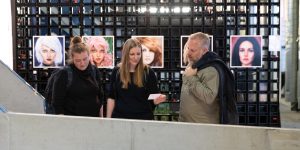
In the age of machine learning, robotics, and technological dependency, questions of what it means to be human are reflected back to us in new ways by our synthetic creations. Issues of creativity, authorship, inspiration, and philosophy (which have traditionally been recognized as exclusively human traits) come into question as we find ourselves amongst ever more intelligent and capable machines. Works from the human-machine collaboration series explore these questions by using art as tangible philosophy.
Kal Spelletich (US)
Organs Sound The Body: Artificial Flesh
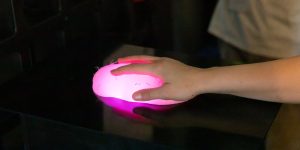
With Organs Sound The Body, San Francisco machine-arts icon Kal Spelletich sets out to create “backup organs for an artist who has never had health insurance,” positing a series of hybrid human organs (lungs, heart, kidneys, skin) as playful and reactive metaphors for survival, identity, agency, and responsibility in an era in which increasingly utilitarian values may overshadow technology’s capacity for poetry. A profound meditation on the healthcare crisis, these interactive works also serve as witnesses in the aging process.
Project Credits:
- With technical assistance from Jon Foote
JD Beltran (US), Scott Minneman (US)
Liminous

Liminous is a blending of the words “liminal” and “luminous.” The word liminal is defined as “of, or relating to, a transitional process,” or “occupying a position at, or on both sides of, a boundary or threshold.” The word luminous is defined as “full of light; bright or shining, especially in the dark.” Using iconic analog forms, sculptural lenses and the moving image, the Liminous series explores, expands upon, and blurs the boundaries of cinema, time, light, past, and future.
THE CINEMA SNOWGLOBE
The Cinema Snowglobe is a 21st century snowglobe that features moving images, film, and video. (And snow – actually, tiny particles of glitter.) Shaking these 21st century snowglobes opens a view into a tiny world of engaging stories, moments, and landscapes. The snowglobes marry the nostalgic form of the classic tourist tchotchke with custom electronics, creating dreamlike environments in a miniature crystal ball.
The Cinema Snowglobe was born at the Workshop Residence, debuted at the San Francisco Museum of Modern Art, and has been featured on NPR. The project was awarded the prestigious New Technology Art Award in 2014, an international biennial award recognizing the best in technology-based art. In 2015, they were featured at the International Film Festival Rotterdam, and in 2018, they received a prestigious CES Innovation Award.
Current versions include a virtual journey across the Golden Gate Bridge, a cross-country road trip, a night sky of Fourth of July Fireworks, a walk through the Rose Garden at Golden Gate Park, and a time-lapse film of how artists have rendered the eye from the cave paintings to the present. JD and Scott also collaborated with artist Leo Villareal to create a Cinema Snowglobe of his magnificent public artwork, the sparkling San Francisco Bay Lights on the Bay Bridge.
THE CRYSTAL BALL SERIES
The Crystal Ball Series features evocative storytelling using the iconic form of the crystal ball. Peer into these works to view immersive stories, strange landscapes, and momentary glimpses of dreamlike journeys. The crystal balls marry the traditional form of the classic crystal ball with custom electronics and high-definition video. One current edition includes a detailed journey over the pearly surface of the moon and the mosaic landscapes of earth (using actual footage from NASA), and another evokes an unexpected flight through stormy weather. The spheres evoke an immersive virtual world through gazing down into them.
THE KALEIDOSCOPE SERIES
The Kaleidoscope Series features short films of journeys and landscapes arranged into a grid of multiplied synchronized moving images. The effect of the visual repetition creates a moving, patterned “print” before your eyes. The short films that form the basis for these video prints include a journey under the swooping towers of the San Francisco Bay Bridge, patterns formed by the moving tarmac of an airplane departure, and a condensed cross-country road trip under the breathtaking skies of Montana and through iconic landscapes of Yellowstone Park, Devil’s Tower, and the Great Salt Lake.
Project Credits:
- The Cinema Snowglobe [4 pieces]:
2.5” glass sphere with fluid, snow, film, custom electronics and circuitry
custom software, acrylic, glass globe, film and video, custom display; duration variable
cinemasnowglobes.com. - The Crystal Ball Series [1 piece]:
Moon, 2014, Edition of 10
Weather, 2015, Edition of 10
Dream I, 2016, Edition of 10
Large crystal sphere, HD video loop, flat-screen video player, custom base - The Kaleidoscope Series [3 pieces]:
Bridge III, 2014 edition of 10
Flight, 2015, edition of 10
Road Trip, 2015, edition of 10 - Custom hemispheric lenses, HD video loop, flat-screen video player, custom matting and framing
Chris Kerich (US)
Piles

Piles is a durational video performance piece about bodies. It consists of a collection of over 22 hours of video recordings, livestreamed on Twitch, of the piling up of dead or unconscious bodies in seven different video games. The piece programmatically switches between and juxtaposes these videos, calling attention to how different video games conceptualize, and enforce, their inherent views on death and the body.
Joel Simon (US)
Ganbreeder

Ganbreeder is a massively collaborative online image-making tool powered by generative adversarial networks. Ganbreeder approaches creativity as an explorative dialogue between human, computer, and community. Thousands of users have collaborated on millions of images, each of which results from many individuals contributions.
Website:
Steven Thompson (US)
Reciprocus

An interdisciplinary exploration of the philosophy of mathematics, collective wisdom, and group intelligence, these works bring the surreal to the surface of the mundane while asking us to consider our interstellar nostalgia and other quintessential questions of the human condition.
Artivive (AT)
ARTIVIVE @ STOCHASTIC
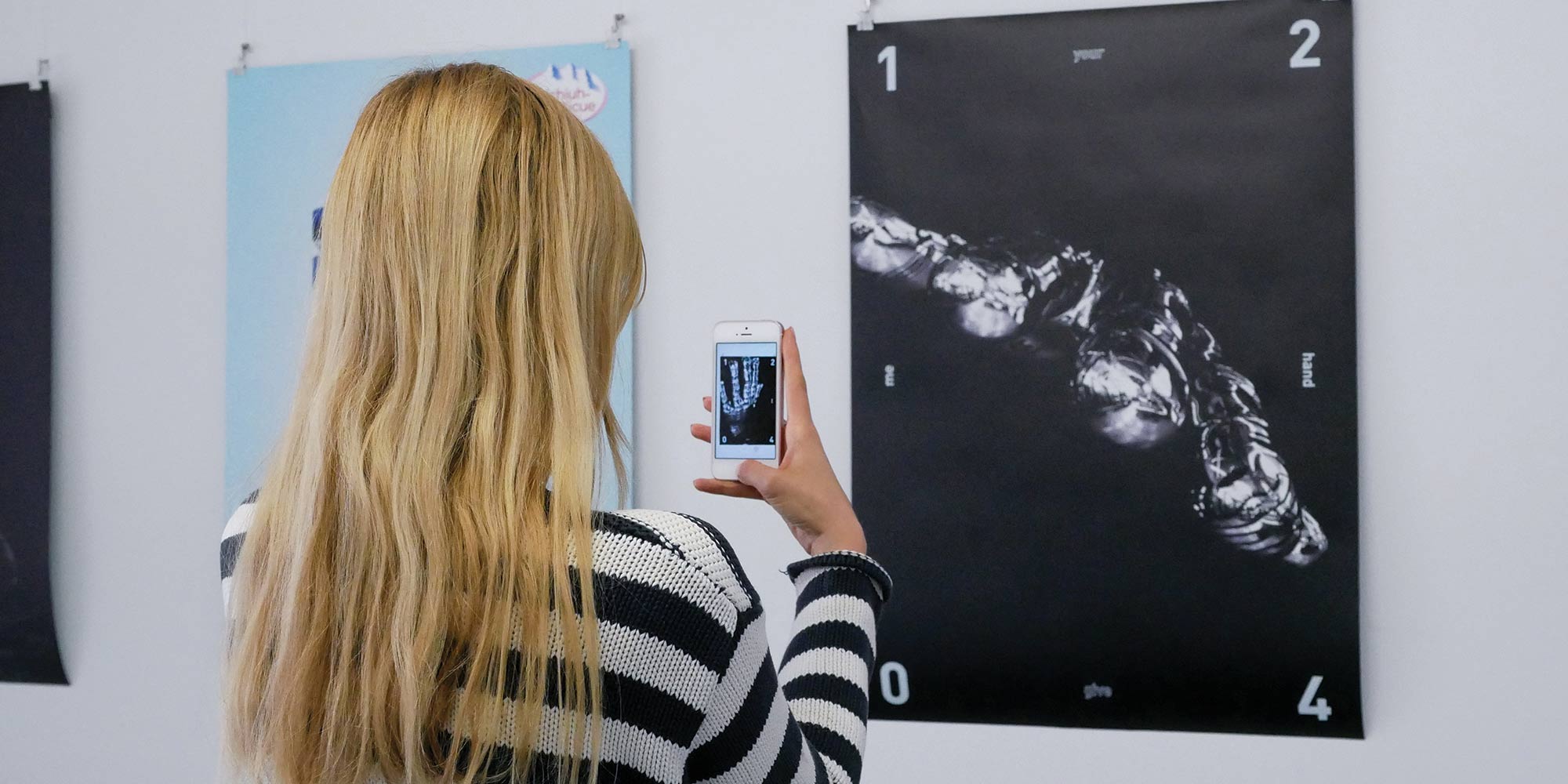
Is Augmented Reality offering a new narrative for artworks? How might artists use this invisible, digital layer to extend creative possibilities? How will viewer interactions within this layer shape the future of the public and private experience of art? In this exhibition, Artivive considers these questions together with Stochastic Labs artists…and festival goers.
ARTIVIVE instructions:
Website:
Jonathan Foote (US)
Skycolor
The Skycolor project explores the digital capture of real experience. Specifically, we are attempting to capture the quantifiable as well as the ineffable qualities of California daylight as observed through the window of Stochastic Labs over the course of a summer. We are experimenting with the temporal and luminous aspects of capturing and reproducing light, visualizing temporal data, and investigating what perceptual qualities digital sensors will destroy, and what qualities they can enhance.
CRISPR (un)commons
To date, the conversation around CRISPR has largely focused on its exceptional potential to cure challenging diseases such as HIV and malaria or doomsday scenarios of epic proportions. Meanwhile, the scientists developing this radical and compelling technology face a much more nuanced set of investigative and social concerns. This year, a select group of Stochastic Labs artists have been given an unprecedented opportunity to work alongside the very scientists who pioneered CRISPR at UC Berkeley’s Innovative Genomics Institute, as they continue to explore the groundbreaking topics that will shape the future of this critical field– and the world as we know it.

Dorothy Santos (US)
Press 1 to be Connected
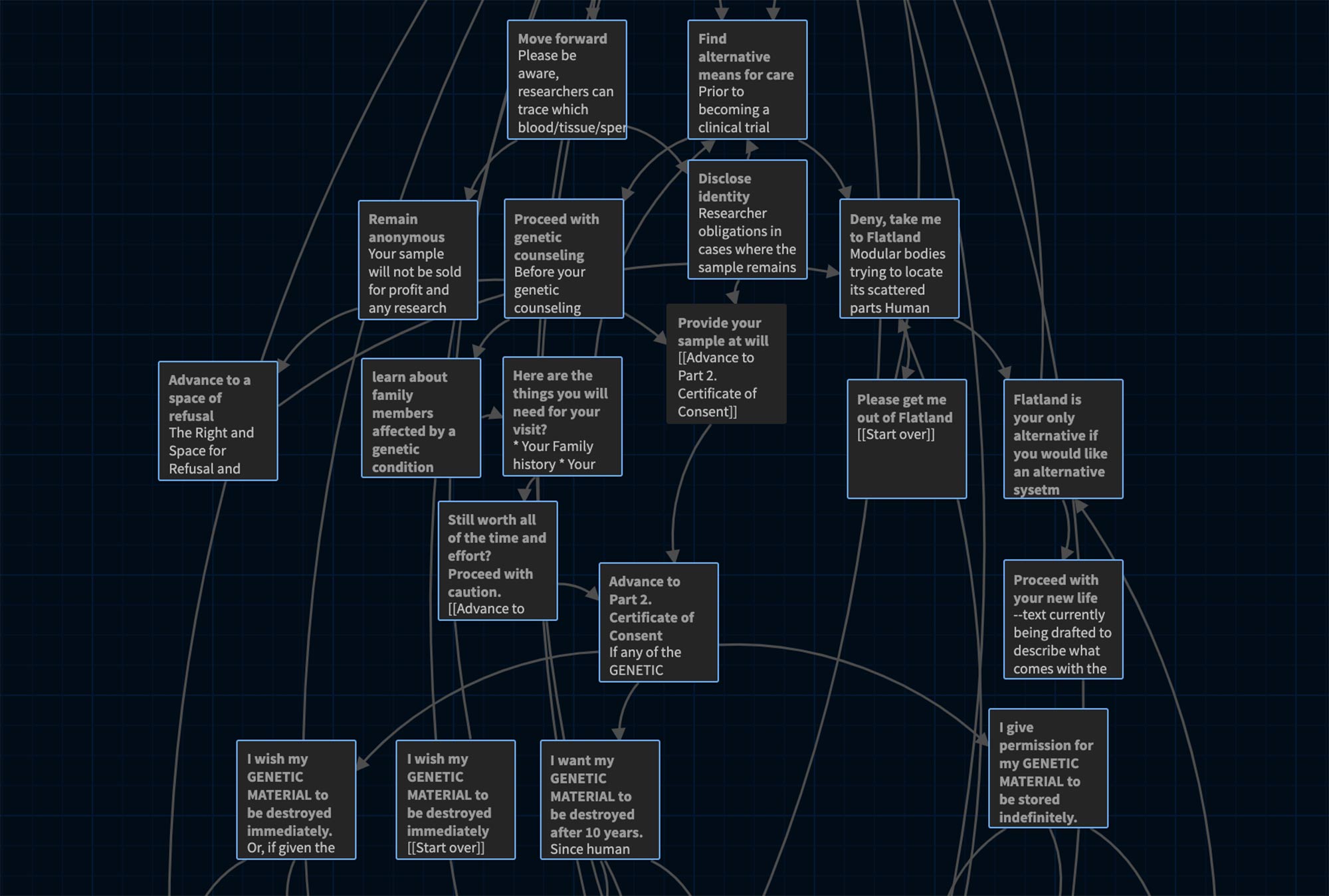
Press 1 to be Connected presents the telephone as a medium for bio-surveillance and the transmission of biometric data. Phones have been used for decades by clinicians and pharmaceutical companies to collect data on subjects and track drug inventory through electronic data capturing systems such as “interactive voice response systems.” This work represents a novel form for interactive storytelling in which the participant can listen to the path of a specific narrative related to our genomic futures.
Alison Irvine (US), Andy Cavatorta (US)
Automation #1 and Automation #2

Inspired by the punched cards of a Jacquard loom, Automation #1 punches patterns of holes into paper. The underlying data are the genetic sequences most likely to be modified in future humans.
Automation #2 uses a Jacquard loom to automatically weave the data patterns from these genes into long tapestries. The pieces explore the convergence of CRISPR gene-editing technology, machine learning, and automation.
Sheng-Ying Pao (TW)
CRISPR and the Art of Paper

Meet CRISPaper: paper made from CRISPR-altered crops. CRISPaper revisits the ancient Eastern craft of paper-making in light of current bioengineering techniques developed in Western labs. As the research and design of CRISPR-altered crops currently aims for sustainable agriculture in the developing world, the artist asks us to consider what that notion of sustainability might mean for each of us by drawing on the fragility of paper as metaphor.
Vero Bollow (US)
Wakeful Rests
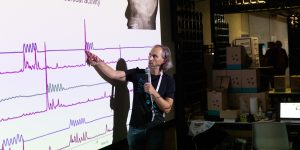
Visual reality appears to us as a continuous stream of images—yet for 5-10% of our waking lives our eyes are, in fact, closed.
The average human blinks every 3-6 seconds. The primary reason for this is thought to be physiological, but recent science has demonstrated a range of associations to perceptual, communicative, and cognitive function as well. In 2012, a team of neuroscientists in Japan posited that blinking may in fact represent a kind of subconscious default mechanism by which humans take an internal break from engaging with the external visual world – a “wakeful rest.” In 2019, a study in Israel demonstrated that blinking likely contributes to the subjectivity of our conscious experience of time.
In the era of hyperconnectivity, constant content, and potentially infinite simultaneity, human attention reveals itself as a fixed resource. Consequently, the choices we make around its allocation become increasingly fundamental to who we are. In this new context, might the everyday rhythms of our visual lapses be considered (as celebrated film editor Walter Murch suggests) “as characteristic of each of us as our signatures”?
Wakeful Rests juxtaposes the possibility of multiple, simultaneous, “lapse-less” visual realities with the singular, deeply personal act of human seeing. On a large screen, live video is pulled from over one hundred 24-hour webcams around the world to create a real-time, spontaneous cinema experience. Meanwhile, a computer vision module detects the viewer’s blinks. Afterwards, the corresponding “missed frames” are played back via the Blinkstream: an infinitely accumulating sequence of recalled images—each uniquely unseen by a preceding viewer.
Projekt Credits:
- with Robert M. Ochshorn, software & design
Biographies:
Filmmaker Vero Bollow tells stories about science, technology, and the idiosyncrasies of the human spirit. Her international feature, The Wind and the Water, was nominated for the Grand Jury Prize at the Sundance Film Festival. In 2014, she founded Stochastic Labs to support pioneering creative ventures in the San Francisco bay area. Vero holds master’s degrees from MIT and Columbia. She is also the director of the Minerva Foundation.
Artivive (AT) is creating an entirely new medium for artists around the world: augmented reality. The AR platform is currently used by museums and 20k artists on three continents. With built-in network effects from the large install base, Artivive will become as fundamental to artists and art institutions in the 21st century as the canvas and the brush were to their predecessors.
Sergiu Ardelean (AT) is a serial entrepreneur building a successful Augmented Reality agency in Vienna, serving clients like Volkswagen and Audi in forty-two countries. He is working on a startup that envisions the combination of haptic and digital art through AR, and the vision of which is to change how art is created and consumed, by building the community around AR art.
JD Beltran (US) + Scott Minneman’s (US) work taps into classic analog forms and innovative materials, blending the narrative and the abstract in their investigation of how materials tell stories. Their works have received multiple international awards, including the New Technological Art Award (one of the 20 best technology artworks worldwide), and the CES Innovation Award. Both artists are faculty at the California College of the Arts.
http://www.jdbeltran.com/
http://slminneman.com/
Andy Cavatorta (US) is an artist and sculptor working with sound and robotics. His work integrates emerging technologies with traditional crafts to discover new ways to create meaning with sound. He is a graduate of the MIT Media Lab and a Lincoln Prize recipient. His work has been exhibited at MoMA’s Gund Lobby, TED, and The Royal Opera House.
http://andycavatorta.com/
Paolo Cirio (IT/US) has exhibited in international museums and has won prestigious art awards. His work has been covered by hundreds of media outlets worldwide. He regularly gives public lectures and workshops at leading universities.
http://www.paolocirio.net/
Jonathan Foote (US) is a California-based tinkerer, artist, and educator. With a engineering Ph.D., his kinetic and light works explore perception and interaction using sophisticated electronics and programming. Jonathan is an Adjunct Professor at the California College for the Arts, and he was a Autodesk Pier 9 Artist-in-Residence.
Alison Irvine (US) is an artist and biologist whose work is focused on the emergence of new biotechnologies and their implications in the context of social and economic inequities. She holds a degree in Theater and Interdisciplinary Science from Eugene Lang College, The New School for Liberal Arts and is the founding organizer of the Biodesign Challenge.
Chris Kerich (US) is an artist and scholar currently pursuing a Ph.D in Film & Digital Media at the University of California, Santa Cruz. His work is concerned with how infrastructural technologies influence our ways of interpreting the world, with a special focus on video games. His most recent work is specifically focused on the representational technologies of video games: physics, textures, and meshes.
http://www.ckerich.com/
David Leonard (US) is a Los Angeles artist whose work weaves current events, technology and their aesthetic representation. His work has appeared on ABC, CBS, CNN and exhibited at the Getty Museum, The Hammer Museum, What Pipeline, The Bergen Kunstal and MMK.
Lauren McCarthy (US) is an LA-based artist examining social relationships in the midst of surveillance, automation, and algorithmic living. She is the creator of p5.js, an open source platform for learning creative expression through code online.
http://lauren-mccarthy.com/
Alexander Reben’s (US) work probes the inherently human nature of the artificial. Using tools such as artificial philosophy, synthetic psychology, perceptual manipulation and technological magic, he brings to light our inseparable evolutionary entanglement to invention. He is a graduate of the MIT Media Lab and represented by the Charlie James Gallery.
http://areben.com/
Dorothy R. Santos (US) is a writer and artist whose academic interests include digital art, computational media, games and biotechnology. She is currently a Ph.D. student in Film and Digital Media at the University of California, Santa Cruz as a Eugene V. Cota-Robles Fellow.
https://dorothysantos.com/
Joel Simon (US) is best known for his viral creation Facebook Graffiti. He studied computer science and fine art at Carnegie Mellon University before working on bioinformatics at Rockefeller University. He is interested in the intersection of computer science, biology and design, as well as furniture design and collaborative creativity.
https://www.joelsimon.net/
For almost four decades, Kal Spelletich (US) has built interactive machines and robots. His work enacts a liberated awareness and pushes his audience toward creative responses to technology in their lives. It explores the interface of humans and science to put people in touch with philosophical interactive experiences.
https://kaltek.wordpress.com/
Steve Thompson’s (US) paintings and sculptures are an exploration of experience as an approximation to an inaccessible philosophy, and our shared human desires for visceral tactility and obsession with order and satisfaction. Also a fabricator and educator, Steve is currently authoring a book on CNC routing.
Sheng-Ying Pao (TW) leads teams in Asia and the US in studying the development of technology-enabled art and interdisciplinary innovation. Her work has won several major awards, including the iF Design Award, the Red Dot Design Award, the MIT TechX Innovation Prize and the London Design Museum’s “Best Design of the Year” designation. Sheng-Ying received her PhD from the MIT Media Lab, where she was designated MIT Cisco Fellow for two consecutive years and selected as the first MIT PhD Arts Scholar.
https://www.paoshengying.com/
